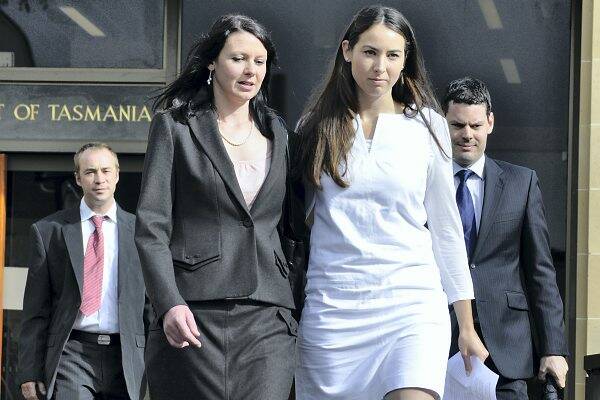
CONVICTED killer Susan Blyth Neill-Fraser yesterday lost an appeal against her conviction but her family has vowed to take the fight to the High Court.
Subscribe now for unlimited access.
or signup to continue reading
Neill-Fraser, 57, was found guilty of murdering her long-term partner, medical scientist Bob Chappell, aboard the couple's yacht in the Derwent River in 2009.
Mr Chappell's body has not been found.
The Tasmanian Court of Criminal Appeal dismissed Neill-Fraser's appeal against the conviction but upheld her appeal against her 26-year prison sentence, reducing it to 23 years with a non-parole period of 13 years, down from the original non-parole period of 18 years.
``Our only option is to proceed further,'' Neill-Fraser's daughter Emma Meeker said outside the court.
Neill-Fraser's other daughter Sarah Bowles said there was a ``legal minefield'' ahead for the family.
``It seems that perhaps there may be no other way but to actually find out who the real culprits are and this can only be done through . . . private family investigations,'' she said.
The family has already engaged former Integrity Commission head Barbara Etter to review the case and Ms Etter has called on police to reopen the investigation.
Mrs Bowles said taking the appeal to the High Court would be ``extremely difficult''.
One of the appeal grounds argued that a miscarriage of justice occurred when a homeless teenager whose DNA was found on the yacht was not recalled to give further evidence.
Chief Justice Ewan Crawford yesterday said it was entirely speculative as to whether the witness might have given answers that would have assisted the defence case.
He also found that the trial judge was right to leave the possibility of manslaughter for the jury to consider.
``As, through her counsel, she (Neill-Fraser) was content for it to be left for the jury's consideration, her complaint about it on appeal has a distinctly hollow ring,'' he said.
Neill-Fraser also complained on appeal about a hypothesis put by the Crown that she had used a wrench to kill Mr Chappell.
She further complained about an example given by the trial judge of ``hitting a man on the head with a wrench''.
``His Honour made it clear to the jury that the use of the wrench was merely a theory and there was no evidence that one was used,'' Chief Justice Crawford said.
``Concerning his Honour's use of a wrench in the examples he gave to the jury, it would have been obvious to the jury that examples were being given and that the judge was not endorsing the theory raised by counsel for the Crown.''













